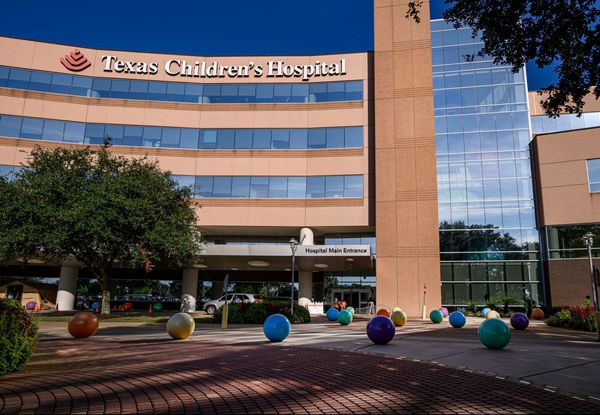
In Monday’s big NHS speech, Keir Starmer promised that by spring 2029 92% of patients waiting for planned care in England would once again be treated within 18 weeks, as they are meant to be already – but only six in 10 actually are.
“This elective reform plan will deliver on our promise to end the backlogs,” the prime minister vowed, as he set out initiatives to fulfil a pledge that is a key part of his plan for change.
Here we detail the key elements of the plan and assess their chances of succeeding.
Expanding the role of community diagnostic centres
A network of CDCs across England was first announced in October 2021, to help the NHS improve waiting times after the huge disruption to care caused by Covid-19. They are meant to provide quicker access to X-rays and CT and MRI scans, and be in convenient locations such as shopping centres, thus improving earlier diagnosis of disease and reducing the pressure on hospitals.
The innovative element of Starmer’s plan is that the 170 or so CDCs will open for 12 hours a day seven days a week “wherever possible”, to expand the number of tests done. However, even if that happens, “it’s in the helpful but not gamechanging category when it comes to making a significant dent in NHS waiting lists”, says Siva Anandaciva, the chief analyst at the King’s Fund thinktank.
Only 10% of CT and MRIs are done in CDCs, even though they have existed for several years, and experts believe progress in rolling them out has been “slower than hoped”, the Health Service Journal reported in November.
More operations done in surgical hubs
Again, these have existed for several years and more than 100 have been opened. These specialist facilities typically perform common operations such as cataract removals and hip replacements. Under the elective reform plan 14 more will open in hospitals by June and three others will be expanded, allowing more surgery to take place and treatment to take place sooner.
Do they work? The evidence suggests they do. Hubs enable the NHS trusts that host them to do 22% more operations than if they did not have one. That is mainly because, with hubs being separate to the rest of the hospital’s activity and having their own beds and staff, routine operations there are less likely to get cancelled because of a bed shortage.
However, NHS staff shortages could make it hard for CDCs and surgical hubs to between them deliver the extra 500,000 appointments a year the new plan envisages, Anandaciva says.
“Where are the staff going to come from? The NHS still has about 100,000 vacancies. The government have talked a lot about their ambitions for these two types of facilities but not said much about who exactly will staff them,” he says.
Using the private sector to treat more NHS patients
Under the new plan private firms will give NHS patients about 1m extra outpatient appointments, diagnostic tests and operations a year on top of the 5m they already do, the Independent Healthcare Providers Network says. That 20% increase in activity could mean they receive a further £2.5bn more than the £12.3bn they already get from the NHS and the Department of Health and Social Care.
The NHS in England has been using private health providers to treat patients since Tony Blair’s Labour government pioneered that approach in the NHS plan in 2000. Governments since have increased the NHS’s reliance on for-profit operators treating NHS patients, paid for from the service’s budget – “that’s been tried over and over again”, says Anandaciva.
The fact that the NHS is busier now than in 2000 means it is likely that patients seeking to exercise their choice of location “will face a choice between a long wait at hospital A and a long wait at hospital B. I’m sceptical that it will make much difference to how long people wait.”
All hospitals to treat 65% of patients on wait list within 18 weeks
Under the plan all NHS trusts should be treating at least 65% of patients on the referral to treatment waiting list within 18 weeks by the end of March 2026. Just 59% are seen within that timeframe now.
The 6% rise in performance needed in a short space of time has been achieved before, between August 2007 and March 2008, says Sarah Arnold, the King’s Fund’s senior policy lead. But, she adds, the NHS was in better shape then than it is today.
During 2023-24 only a third of trusts improved the percentage of patients they treated within 18 weeks. While just over half have done so during 2024-25, “the scale of the challenge [in hitting the new 65% target] is clearly huge”, though its mere existence may help to concentrate trust bosses’ minds, and the absence of strikes by NHS staff make it easier to deliver, Arnold adds.
NHS experts are sceptical that the plan will bring about the promised huge transformation in waiting times. “It would be a heroic feat to hit the 92% target in that time,” says Thea Stein, the chief executive of the Nuffield Trust health thinktank.
Starmer talked about embarking on “radical reform”, but in fact much of the plan involves expanding approaches already deployed by previous Conservative administrations towards the same goal, such as using private hospitals, she adds.
Anandaciva agrees. “The government would be very, very lucky to fulfil to deliver the 92% pledge by the end of this parliament. I wouldn’t bet the house on them doing that. It’s a good plan but it’s more of a plan for gradual improvement by next year than a clear roadmap as to how targets will be delivered by 2029.”







